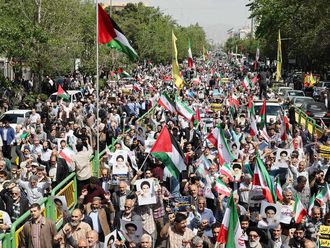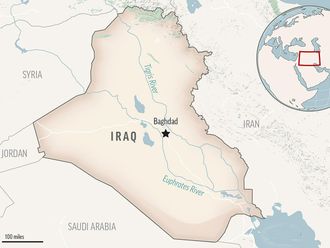Beirut: Despite its mixed record in ‘Abra against Shaikh Shaker Al Absi and now along border towns against Syrian refugees, the Lebanese Armed Forces (LAF) were poorly armed to meet various challenges and, more important, beholden to the country’s complex political snares. For some, the institution was the sole remaining national outfit that could potentially save the country from chaos, while others perceived it as a compromised body without intrinsic abilities to defend citizens. Long neglected by merchant politicians, and perceived as little more than an employment outlet to satisfy selected constituents, the LAF confronted existential dilemmas. It lacked purpose and, more important, was never allowed to acquire the kind of might that could allow the men in uniform to assume their defence responsibilities.
On Tuesday, Parliament’s Finance and Budget Committee drafted a $1.6 billion (Dh5.8 billion) plan to boost LAF capabilities, now scheduled for “discussion” in an upcoming legislative session. It was unclear what the Committee meant by publishing two recommendations for the government, including placing the draft law on the agenda of the ‘necessity legislation’ session, or whether this effort included anything more than “approving the ranks and salary scale” of LAF personnel. According to press reports, a technical recommendation provided for the acquisition of “heavy weapons and fighting vehicles” over non-lethal equipment like buildings and transport automobiles, though it did not specify which country or countries were willing and ready to make such sales.
Five-year plan
In the event, this was a five-year plan and, at least as far as anyone knew, independent of recent Saudi donations to the LAF. In fact, Riyadh announced a $3 billion grant in late December 2013 to buy weapons from France, and added another $1 billion in August 2014 to boost the country’s counter-terrorism forces. Both commitments lingered as Lebanese and French operatives haggled over commissions to be paid to specific beneficiaries while army personnel scurried from capital to capital in search of equipment.
To date, only the United States has provided arms to the LAF, totalling $700 million worth of equipment since 2005. Washington supplied the LAF High Mobility Multipurpose Wheeled Vehicles (HMMWVs) plus spare parts; M113 armoured personnel carriers, trucks and tractors; Tow II anti-tank launchers and missiles; M198 155mm howitzers; 120mm and 82mm mortars; AT-4 anti-tank weapons; MK19 grenade launchers; sniper rifles, machine guns (including M4, M16A4, and M-60s), grenade launchers for rifles, and ammunition ranging from 5.56mm to 155mm; support equipment, including a fully equipped field hospital, body armour, night vision goggles, chemical weapon detection and protection equipment; and tactical radios, switchboards as well as a trucked radio system. Ongoing weekly deliveries accelerated these transfers while the small Lebanese Navy, which was given a state-of-the-art 42 metre coastal security craft along with eight rigid hull inflatable boats in 2013, was expected to receive an addition eight boats before long.
According to the London-based International Institute for Strategic Studies, the Lebanese Air Force fielded nine combat capable aircraft — obsolete British-made Hunters — and 8 French-made Gazelle helicopters donated by the UAE (an additional five Gazelles were in storage and needed extensive refurbishment). The LAF deployed 12 American-made UH-1H Huey helicopters that were primarily used for transport although 6 could be used in combat. A few months ago, the US initiated the sale of 18 newer Bell UH-1H aircraft, known as UH-1H-II. The transfer was approved by the US Department of State on September 19, 2014 and was valued at $180 million, including parts, support, and training.
Once in service, the 18 new helicopters would augment the six Huey IIs that Lebanon received in 2012 though the new ones differed from the standard model as they were fitted with updated features, including more powerful engines, new dynamic parts, and ‘glass’ cockpits that featured digital instrument displays on larger LCD screens that improved flying conditions. Because the LAF’s Hunters flew so rarely, the Gazelles and Hueys were pressed into service by Lebanon as bombers. In fact, the latest acquisitions were fitted with extended undercarriage skids and improvised bomb racks for the delivery of 250kg and 400kg bombs, also included in the latest sales.
It was ironic that Lebanese politicians bickered over expenditure and commissions at a time when the LAF needed all the help it could possibly receive, and though critics were aplenty, the latest American sales, supplemented with a third armed Cessna Caravan platform that contained electronic gear to “guide” the helicopters, allowed the institution to offer minimal defences.












